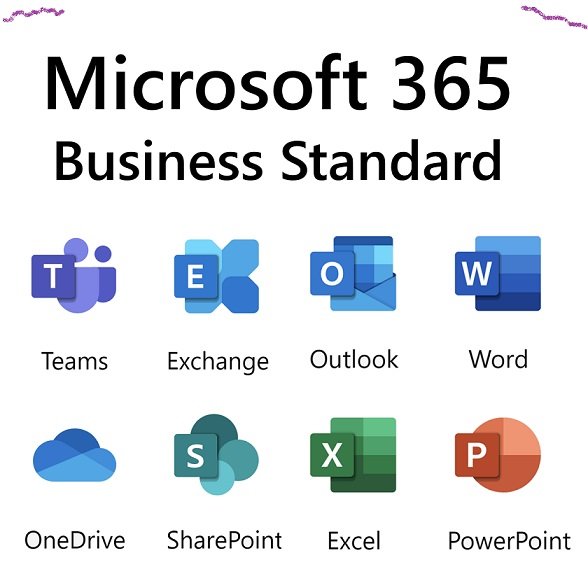Table of Contents
ToggleBusiness Video: The Ultimate Guide to Creating Impactful Videos for Your Business
In today’s digital era, the use of video in business has become an essential tool for engaging with audiences, marketing products or services, and building brand presence. Whether you’re a small business owner or part of a large corporation, video is a powerful medium that can help convey messages more effectively than any other form of content. Video content is more engaging, more memorable, and can convey complex ideas in a more digestible manner.
In this comprehensive guide, we’ll explore the significance of business videos, different types of videos that businesses can create, and the best practices for leveraging video content to drive results. We’ll also look at statistics, success stories, and tools that can help you create the best business video content.
Why Use Video for Your Business?
In recent years, video has evolved as the leading form of content on the internet. Here are some key reasons why video is a vital tool for businesses:
- Higher Engagement: Videos engage audiences more effectively than text-based content. People are more likely to watch a video than read an article, and they spend more time on websites that feature videos.
- Increased Conversion Rates: Video content on landing pages and product pages has been shown to increase conversion rates. Visitors are more likely to take action after watching a product demonstration or promotional video.
- Improved SEO: Search engines, particularly Google, prioritize video content in search results. Embedding videos on your website increases the chances of ranking higher on search engine result pages (SERPs).
- Better Understanding of Products or Services: Videos can visually showcase products, demonstrate services, and provide insights into your business, making it easier for customers to understand what you offer.
- Wider Reach: Videos are easily shared on social media platforms, helping your brand reach a larger audience. Platforms like YouTube, Facebook, Instagram, and TikTok all prioritize video content in their algorithms.
Types of Business Videos You Can Create
There are various types of business videos, each serving different purposes. Let’s explore the most popular ones:
1. Explainer Videos
Explainer videos are short, typically 1-2 minutes long, and are used to explain a product, service, or concept in a simple, engaging way. These videos are perfect for businesses that want to clarify how their product works or how their service benefits customers.
- Use Cases: Startups, SaaS companies, eCommerce brands.
- Example: Dropbox’s explainer video that simply explains how the cloud storage service works.
2. Product Demonstration Videos
Product demonstration videos allow businesses to showcase the features and benefits of their product. These videos often focus on how a product solves a specific problem for the customer.
- Use Cases: Retailers, manufacturers, tech companies.
- Example: Apple’s product launch events and demo videos for their new products.
3. Customer Testimonials
Customer testimonials help build credibility and trust. Featuring satisfied customers talking about how your product or service has benefited them can be incredibly persuasive for potential customers.
- Use Cases: Any business looking to build trust and social proof.
- Example: “I’ve used this product for years and it has changed my life” – a simple yet effective testimonial.
4. Brand Story Videos
Brand story videos are focused on telling the story of your company, its mission, and its values. These videos help build emotional connections with your audience and can strengthen brand loyalty.
- Use Cases: Established brands looking to humanize their company and appeal to the emotions of their audience.
- Example: Coca-Cola’s “Share a Coke” campaign video that emphasized the idea of happiness and togetherness.
5. Webinars and Live Streams
Webinars and live streams are great for engaging with your audience in real-time. These types of videos can include live Q&A sessions, interviews, or discussions on industry-related topics.
- Use Cases: Educational institutions, consulting firms, service-based businesses.
- Example: HubSpot’s live webinars on inbound marketing and sales strategies.
6. Social Media Videos
Short-form videos created specifically for social media platforms are perfect for reaching a broader audience and driving engagement. These videos can be humorous, behind-the-scenes, or informative, depending on the platform.
- Use Cases: Fashion, beauty brands, influencers, eCommerce stores.
- Example: Instagram stories or TikTok videos showcasing a product in action or a behind-the-scenes look at your business.
7. Training and Instructional Videos
These videos help educate your employees or customers about your products or services. Training videos can be used internally for onboarding or externally for customer education.
- Use Cases: Tech companies, eCommerce platforms, service-based businesses.
- Example: Adobe’s tutorials on how to use its design software.
Best Practices for Creating Business Videos
While creating business videos, it’s important to follow certain best practices to ensure that your content resonates with your target audience and drives results. Here are some essential tips:
- Know Your Audience: Tailor your video content to the needs and preferences of your target audience. The tone, style, and messaging should align with what your customers are looking for.
- Keep It Concise: Attention spans are short, especially online. Keep your videos concise and focused. A video that is too long may lose the interest of viewers.
- High-Quality Production: Ensure that your video is of high quality, both in terms of visuals and audio. Invest in good lighting, a quality camera, and clear sound to maintain professionalism.
- Optimize for SEO: Use keyword-rich titles, descriptions, and tags. Adding a transcript or captions can also improve SEO and accessibility.
- Include a Clear Call-to-Action (CTA): Always include a clear CTA at the end of your video. Whether you want viewers to buy a product, sign up for a newsletter, or watch more videos, make sure they know what to do next.
- Mobile Optimization: A large portion of video views comes from mobile devices, so ensure that your videos are optimized for mobile viewing. Keep text readable and avoid clutter.
- Add Subtitles and Captions: Subtitles make your videos more accessible and help retain viewers who may be watching in a sound-off mode.
Tools to Create Business Videos
There are several tools available that can help businesses create high-quality videos without needing professional video production skills. Here are a few:
| Tool | Description | Best For |
|---|---|---|
| Adobe Premiere Pro | Professional video editing software with advanced features. | Businesses with video editing teams. |
| Animoto | A drag-and-drop video maker for creating marketing videos quickly. | Small businesses, content marketers. |
| Camtasia | Video editing software that is easy to use and great for creating tutorials. | Educators, SaaS companies. |
| Lumen5 | AI-powered video creation tool for turning blog posts into videos. | Content creators, marketers. |
| InVideo | Offers customizable templates for creating videos for social media and more. | Social media marketers, eCommerce brands. |
The Power of Business Videos on Social Media
Social media is one of the most effective channels for distributing business videos. Let’s break down the impact of business videos on major social platforms:
- Facebook: Video content is one of the most shared types of posts on Facebook. It helps increase engagement rates and boosts brand visibility.
- Instagram: Short-form videos (such as Stories or Reels) are a great way to showcase your products, behind-the-scenes content, and customer testimonials.
- YouTube: The second-largest search engine in the world, YouTube is ideal for long-form content like tutorials, webinars, and product demonstrations.
- TikTok: This platform is perfect for businesses targeting younger demographics. Short, fun, and engaging videos can go viral quickly, providing massive exposure.
Case Studies: How Businesses Are Using Video to Thrive
Case Study 1: GoPro
GoPro has built an entire brand around user-generated video content. By encouraging their customers to share videos of their adventures, they have created a community of engaged users and a massive following on social media. Their videos demonstrate the versatility and quality of their products, helping them to establish themselves as a leader in the action camera market.
Case Study 2: Dollar Shave Club
Dollar Shave Club’s viral video, “Our Blades Are F***ing Great,” became a sensation on the internet. The humorous and straightforward video helped the brand build a loyal customer base and significantly increased sales.
Conclusion
Business videos have the power to captivate, inform, and convert audiences in ways that text and images simply cannot. Whether you’re explaining a product, showcasing your brand’s story, or engaging with customers, video content is a versatile and effective medium. By following the best practices and leveraging the right tools, you can create business videos that deliver impressive results.
With the right strategy, video can take your business to the next level, helping you build stronger relationships with your audience and drive significant growth.
Disclaimer
The information provided in this article is for informational purposes only. While every effort has been made to ensure the accuracy of the content, the author and website do not take responsibility for any discrepancies or inaccuracies in the video marketing strategies mentioned. Please consult professionals for personalized advice.




